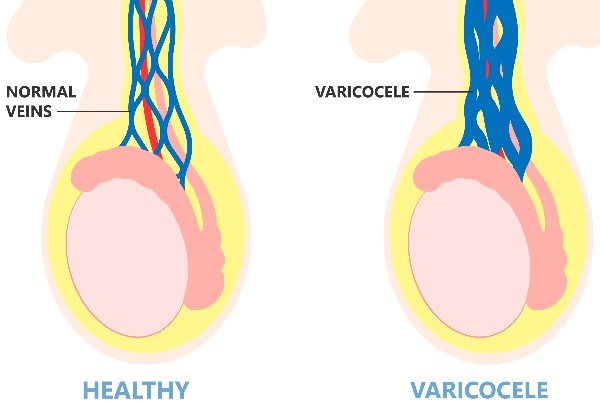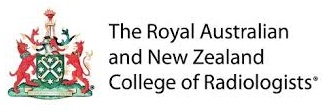VARICOCOELE EMBOLISATION MELBOURNE
VARICOCOELE TREATMENT
Learn about Varicocoele Embolisation including the procedure, benefits, risks and more:
VARICOCOELE EMBOLISATION MELBOURNE
Source: Dr Philip Chan – MBBS, MMed (Radiology), FRANZCR, EBIR.
Interventional Radiologist.
WHAT ARE VARICOCOELES
What are Varicocoeles – Varicocoeles are baggy testicular veins in the scrotum caused by abnormal blood flow (reflux) of the gonadal vein, usually occurring on the left side.
While many varicocoeles do not cause symptoms, they can cause pain, discomfort and fertility problems by impacting sperm production.
A Varicocoele Embolisation may be considered if you have any of these symptoms or fertility problems with abnormal sperm analysis result.

Source: John Hopkins – Varicocoele Embolisation
WHAT IS A VARICOCOELE EMBOLISATION
What is a Varicocoele Embolisation – The minimally invasive operation is performed through a 2-3 mm hole through a vein in the groin or neck. A catheter, a small hollow plastic tube, is placed into the gonadal vein.
The vein is blocked with a combination of coils and a medical grade irritant which causes the vein to clot.
The operation typically takes 45 minutes to an hour, and can be safely performed under sedation and local anaesthesia.
What are the coils made of – All coils used in embolisation are sterile, medical grade coils. Most coils are made with platinum or an alloy of platinum and tungsten. Once placed, they will remain in your body permanently.

Source: IRSA – Varicocoele Embolisation
WHO IS A SUITABLE CANDIDATE FOR A VARICOCOELE EMBOLISATION
Your doctor may refer you for varicocoele embolisation if you have varicocele causing symptoms such as:
Dull or aching scrotal pain
Discomfort in the scrotum
Fertility issues with abnormal sperm parameters
Recurrence after surgery.
Varicocoeles can also affect testicular development in adolescents.
HOW DO I PREPARE FOR A VARICOCOELE EMBOLISATION
Preparation – Patients are asked to prepare for an overnight stay in hospital (some patients may be able to go home the same day) and fast for 6 hours before the procedure.
Further testing – You may require more relevant investigations such as blood tests, ultrasound, CT or MRI as part of your work up.
Medications – Your doctor will review your list of medications and you may need to stop these before the operation.
Going home – Have someone to drive you home after your procedure.
Your doctor will give you specific instructions based on your unique situation. Hospital information and relative paperwork will be supplied to you by the WIRES Radiology team and admitting hospital staff.
RECOVERY – WHAT TO EXPECT AFTER THE PROCEDURE
Recovery – Most patients can expect to go home the same day. You may experience some abdominal and back pain, and may have some swelling, tenderness or a lump near the scrotum.
These side effects are expected to resolve in a few weeks.
Activity levels – You will be asked to refrain from exerting yourself, carrying heavy objects (up to 5 kg), masturbation or having sex for a week as they may cause the veins to “open up”.
Medications and pain management – If you take medications, your doctor will discuss this will you before restarting. Pain, in most cases can be managed by over the counter medications.
Post embolisation syndrome – You may experience a phenomenon called post embolisation syndrome. This is caused by the body’s reaction to the operation. Patients often feel fatigued, have low grade fever, nausea, vomiting, low appetite, generalised muscle and joint aches – similar to having a cold without the head symptoms.
These are easily managed with paracetamol and ibuprofen, and should resolve after 7-14 days.
Your doctor will discuss these topics with you in relation to your specific situation.
ADVANTAGES OF A VARICOCOELE EMBOLISATION
A varicocoele embolisation:
Utilises minimally invasive technique – Minimally invasive procedures use small incisions, specialised equipment and image guidance to access and treat problems deep inside the body. This may lower the infection risk, result in a shorter hospital stay, quicker recovery, and smaller scars.
Varicocoele embolisation has a success rate of around 90%, comparable to traditional surgical options.
Offers a potentially shorter recovery time and fewer potential complications than traditional surgical approaches.
Same day treatment – Varicocoele embolisation is usually an outpatient procedure, allowing patients to recover at home.
FREQUENTLY ASKED QUESTIONS
Most patients recover quickly after a Varicocoele Embolisation, with many resuming light activities within 1 -2 weeks. You should avoid strenuous activities for a 14 days and keep the dressing on the access site for two days.
Your doctor will be able to give you personalised recovery advice based on your specific situation.
After varicocoele embolisation, you can expect a high success rate (around 90%) in relieving scrotal pain and swelling, and potentially improving sperm quality and fertility, with a quick recovery time and minimal complications. A Varicocoele Embolisation has a high success rate of around 90% in relieving scrotal pain and swelling, and potentially improving sperm quality and fertility, with a quick recovery time and minimal complications.
Improvement in symptoms may be noticed within a few weeks after the procedure. It can take up to three months for the full benefits to be realised.
Fertility Improvement – Patients undergoing varicocele embolisation for fertility-related concerns may observe improvements in semen quality within several months.
Your interventional radiologist will schedule follow-up appointments to monitor your progress.
A Varicocoele Embolisation carries some risks like all medical procedures, which may include but not limited to:
- Bruising or bleeding at the catheter site
- Mild discomfort in the groin or scrotum around the location of the faulty veins for a few days following the procedure
- Mild pain or fever following the procedure
- Temporary urinary retention or infection
- Coil migration – In rare cases, a coil used to close the vein may move to the lungs, causing a mild cough or chest pain
- Incomplete embolisation – If the varicocele is not adequately treated, the condition may persist or recur, necessitating a repeat procedure or surgical intervention to close off the malfunctioning veins.
Your doctor will discuss with you the risks associated with the procedure in relation to your circumstances.
A Varicocoele Embolisation is generally a well-tolerated procedure. It is a minimally invasive interventional radiology procedure performed under local anaesthetic.
Immediately after the procedure – After the procedure, some patients experience mild to moderate soreness, swelling or aching at the catheter insertion site.
A local anesthetic is used at the insertion site, which helps minimise pain.
Post surgery – Some patients may experience mild groin or scrotal pain afterward from embolisation of the affected veins, but it typically subsides within a week. Most post-procedure pain is generally manageable with over-the-counter medications.
Your doctor will discuss and monitor a pain management plan you specific to your situation.
Common side effects include mild pain, fever, and temporary discomfort. Serious complications are rare but can include issues with the arteries or surrounding organs.
Your doctor will fully explain the procedure and any potential side effects and mitigation strategies to make you as comfortable as possible during and after the procedure.
A Varicocoele Embolisation does not directly target the nerves or tissues involved in sexual function. The procedure may improve sperm quality, which can be beneficial for fertility.
Your doctor will be able to explain your suitability for the procedure.
High success rate – A Varicocoele Embolisation has a success rate of around 90%, comparable to traditional surgical options.
Statistic from IRSA – 9th April 2024 – Visit Varicocoele Embolisation.
A Varicocoele Embolisation to cut off blood flow to the affected blood vessel has a high success rate (around 90%), there is still a small risk of recurrence. If the varicocele does return, it may require a repeat embolisation or surgical treatment.
Statistic from IRSA – 9th April 2024 – Visit Varicocoele Embolisation.


